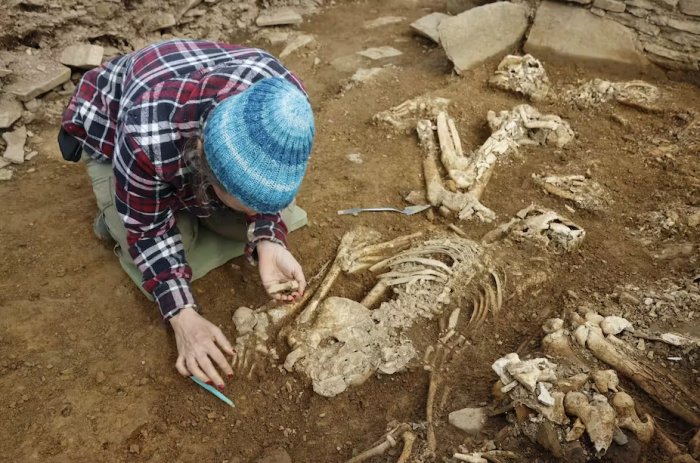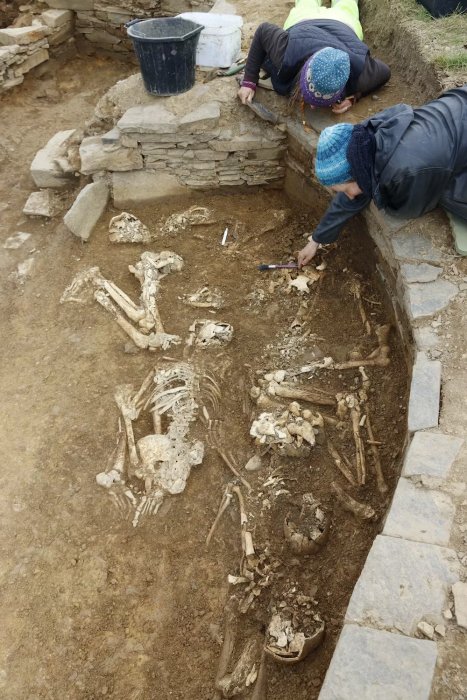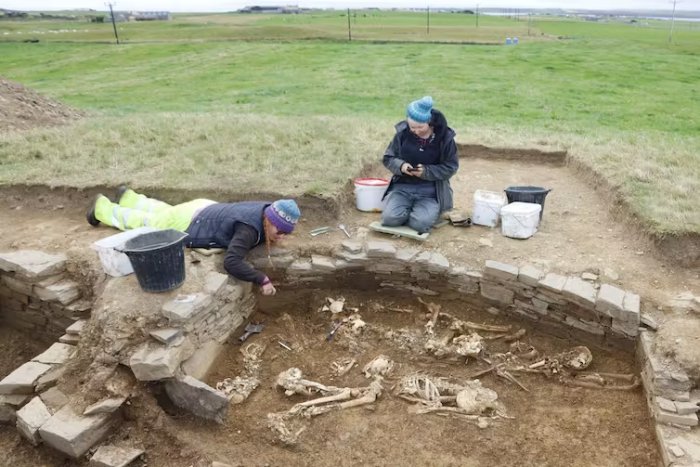AncientPages.com – Orkney in the north of Scotland is renowned for its remarkably well-preserved monuments. Many of these are Neolithic (10,000 BC to 2,200 BC) and consist of stone circles and chambered tombs, which are still highly visible in the landscape. Chambered tombs are monuments built of stone with a chamber area designed to hold the remains of the ᴅᴇᴀᴅ.

Credit: National Museums Scotland
In many parts of Britain, chambered tombs have been robbed for stone, and while this was also the case on Orkney, most sites do not seem to have been as badly affected as in other parts of the country.
In 2020 one of my team encountered a series of letters preserved in National Museums Scotland’s library relating to a dispute over some Neolithic objects discovered in Orkney in the 19th century.
This led us to a newspaper account in the Orkney Herald in 1896, which reported that Orkney antiques specialist James Walls Cursiter had encountered a series of archaeological discoveries made by the son of the landowner at Holm, on the east side of Orkney’s mainland.
The finds included a mace-head made from gneiss (a metamorphic rock with a distinct banding), a plain stone ball and eight skeletons. They were found within the ruins of a stone mound that had previously supplied stone to build a nearby farmhouse. The surviving stonework was interpreted by Cursiter as the remains of a “chambered burial mound.”
This discovery was rapidly forgotten. By coincidence, a recently discovered archaeological notebook belonging to Cursiter revealed further details of the finds. This included a sketch of the monument and, most importantly, an approximate location of the discovery.
All of this appeared to suggest that there may well be an unknown chambered tomb, mostly destroyed, but surviving to some extent nevertheless awaiting rediscovery.
Discovering the tomb
In 2022 a geophysical survey was carried out in the same location as described by Cursiter. Among other features, these surveys located a substantial archaeological anomaly on top of a prominent mound almost precisely in the location described as a position of the monument.

Credit: National Museums Scotland
In 2023, we decided to open up a trench to see if anything survived. When we arrived at the site, it did not look promising. All that remained on the ground was a very slight grᴀssy dome which had clearly been plowed over the years. In a field of many grᴀssy knolls, it was hard to see how this was anything exceptional. Yet, the location was quite prominent, with views out over the landscape in many directions, comparable to other pᴀssage tombs in the area. A pᴀssage tomb is a type of chambered tomb with a long thin pᴀssage leading to a central chamber with smaller cells off the main chamber.
As we peeled off the turf, we quickly came down onto heavily disturbed soil containing smashed Victorian ceramics and stone rubble. This came from a nearby farmhouse that had robbed stone from the tomb in order to build their barn. There was no rubbish collection then, so their waste went out on to the fields. But scattered among this recent material were small fragments of bone which looked much older.
As we dug further down, we started to encounter the lower walls of a stone structure, exactly as described by Cursiter. Much of the bone within the stone structure was highly fragmentary, which seemed to reinforce the idea that this monument had been mostly destroyed in the 19th century.
However, in one of the side cells off the main pᴀssage—which was largely filled with small stone rubble that accumulated from the dismantling of an intact side cell which would once have had a high roof—we found a perfectly preserved and undisturbed Neolithic tomb deposit.
This consisted of a minimum of 14 burials of seven adults and seven children. The skeletons were placed in a variety of different positions. Two were crouched (knees to chest) and laid on their side, while another was тιԍнтly flexed with the knees pulled тιԍнт to the chest, and placed face down. Two were placed in the grave embracing one another, with the remains of two young children placed on their heads.

Credit: National Museums Scotland
This level of preservation is remarkable. It is quite unusual to find tomb deposits intact and so well preserved.
In revealing and excavating these remains, we have found a lost pᴀssage tomb, but also revealed that these finds will not be preserved forever. The soil added into the monument during the Victorian destruction of the site has been eroding the bones ever since, so it is now a race against time to retrieve what survives.
The human remains will enable to us discover many different aspects of peoples’ lives in the Neolithic age, including what they ate and how they died. It also shows that in a landscape where many monuments are exceptionally well preserved, there are still new and exciting discoveries to be made.
Written by Professor of Neolithic Archaeology, Cardiff University
Provided by The Conversation
This article is republished from The Conversation under a Creative Commons license. Read the original article.





